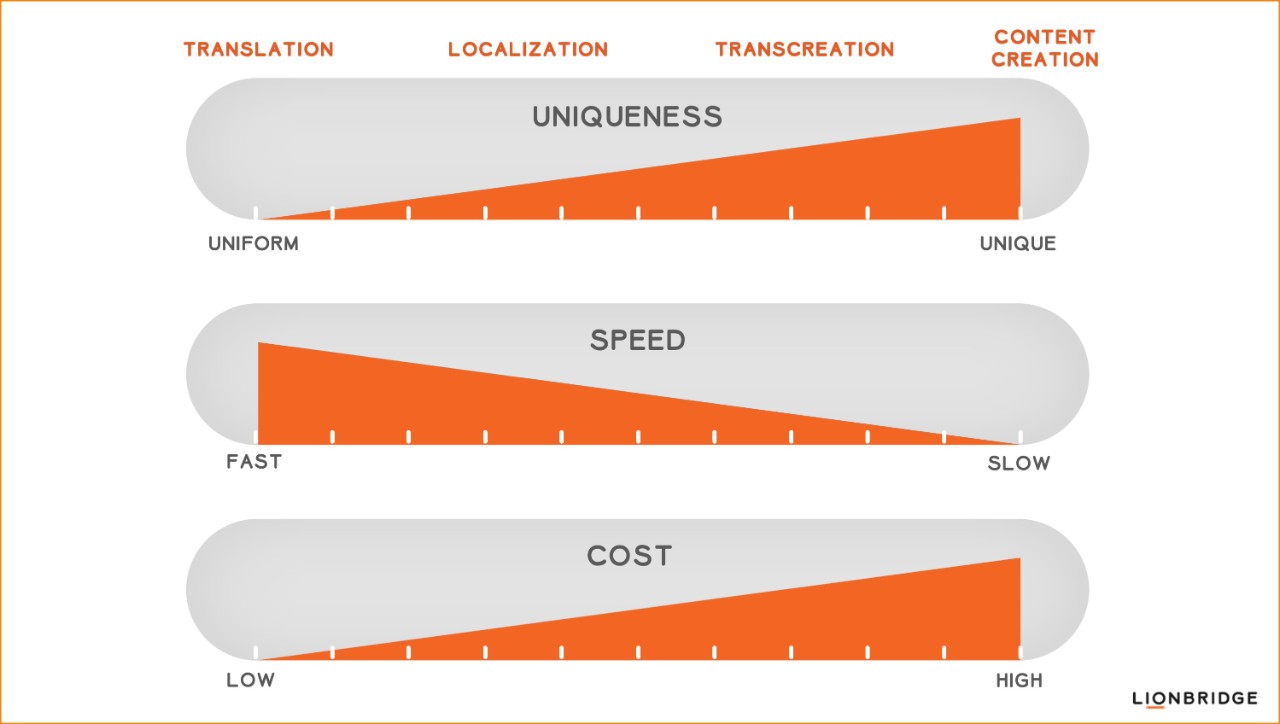- WHAT WE DO
Additional Services

- Industries

Case Study: Multilingual Retail Marketing
New AI Content Creation Solutions for a Sports and Apparel Giant

- RESOURCES

- WHO WE ARE

What We Do Home
Generative AI
- AI Translation Services
- Content Remix
AI Data Services
- Aurora AI Studio™
Machine Translation
- MT Tracker
Instant Interpreter
Customer Onboarding
Translation Service Models
Content Services
- Technical Writing
- Training & eLearning
- Financial Reports
- Digital Marketing
- SEO & Content Optimization
Translation Services
- Video Localization
- Software Localization
- Website Localization
- Translation for Regulated Companies
- Interpretation
- Instant Interpreter
- Live Events
- Language Quality Services
Testing Services
- Functional QA & Testing
- Compatibility Testing
- Interoperability Testing
- Performance Testing
- Accessibility Testing
- UX/CX Testing
Industries Home
Life Sciences Translations
- Pharmaceutical Translations
- Clinical Trial Translations
- Regulatory Translations
- Post-Approval Translations
- Corporate Pharma Translations
- Medical Device Language Services
- Validation and Clinical
- Regulatory Translations
- Post-Authorization Translations
- Corporate Medical Device Translations
- COA Translation Services
Banking & Finance
Retail
Luxury
E-Commerce
Games
Automotive
Consumer Packaged Goods
Technology
Industrial Manufacturing
Legal Services
Travel & Hospitality
Insights
- Blog Posts
- Case Studies
- Whitepapers
- Solution Briefs
- Infographics
- eBooks
- Videos
Webinars
Lionbridge Knowledge Hubs
- Positive Patient Outcomes
- Modern Clinical Trial Solutions
- Patient Engagement
- AI Thought Leadership
SELECT LANGUAGE:
This is the second part in The Future of Global Digital Marketing series, which explores the impact of the COVID-19 pandemic on digital transformation and digital marketing as companies strive to deliver a consistent multimarket, multichannel experience.
Marketers are used to dealing with content-related challenges on a limited budget. COVID-19 intensified those challenges. The pandemic resulted in a permanent shift to online shopping, causing competition to profoundly increase. Global retailers now find themselves having to adapt to get noticed in a crowded market.
To succeed in this new environment, marketers must push out more content faster. They need to make sure their products appear in many markets across multiple digital channels, make efforts to use inclusive language in their copy and ensure the consistency of their brand voice across languages and markets. The ability to overcome these challenges in a cost-effective manner hinges on a successful multilingual content strategy.
While developing this strategy, they will face pressing decisions related to multilingual content management that will heavily impact their budget and the effectiveness of their marketing. Marketing teams must answer the following questions for every piece of content that will be introduced to foreign markets:
- Will translation suffice for this piece of content?
- Should I instead localize the content into my tier one languages?
- When should I put forth maximum effort and create content from scratch in the desired language?
Different types of content, digital channels and local market needs call for different approaches. In order to figure out the best multilingual content strategy, it is imperative to understand the differences between translating global content, localizing it and creating content that is specifically tailored for local markets.
Retailers can also adapt to the highly competitive marketplace by embracing a new content journey, as we outline in part one of our series.
Why is Translation Appealing? When Does It Fall Short?
Translation is one of the most popular choices when localizing content. Translation is often confused with localization; however, there are specific differences. Translation focuses on text only, while localization aims to adapt the text to local market conditions and goes much further than translation. Translation would not usually tackle things like the adaption of website links, the conversion of currencies or the use of other local market-specific elements.
Translation is relatively fast and inexpensive when compared to other approaches, such as transcreation or content creation. It is most appropriate for straight-forward information. However, translation will often be insufficient if your goal is to make a product or message resonate with a specific target market. Making an emotional appeal to customers or producing other types of high-quality content requires a more sophisticated approach.

What is Localization and Its Limitations?
Localization is a term that has become more common in recent years. It is usually associated with translation, but few people realize localization involves much more than translation.
Localization encompasses all activities related to a product’s adaptation to local markets. This includes addressing local buying behaviors and journeys. It also addresses each market’s cultural and legal requirements. In addition to language considerations, localization focuses on document layouts and other technical aspects involved in presenting products to target audiences.
However, localization can take a company only so far. For instance, companies seeking to optimize online content in multiple regions to enhance search results will often need to use different keywords for every market. Localization will not help to identify those keywords.
In cases like these, companies need to implement a content creation strategy that will enable them to create better content than the content their multimarket competition creates. The solution entails creating original content.
What Are the Pros and Cons of Creating Original Content in a Desired Language?
Creating content specifically for a desired language involves making a new piece of content from scratch, most often through copywriting. It should involve a data-driven approach that is based on in-market research so that locally relevant content may be created. The effort results in numerous benefits. Some of the most important gains include:
- Increased local market relevance through tailored content
- Optimized search engine performance because of original content
- Better engagement of local subsidiaries
The downsides of creating new content for multiple regions include:
- Challenges adhering to a consistent brand voice and uniform terminology
- A higher cost than localization
- The greater likelihood of a decentralized content strategy and content creation process
How Can You Get the Most Out of Your Multimarket Content Strategy?
Translation, localization and content creation each have their own strengths. You may want to create content from scratch to achieve the best possible relevance and personalization. Alternatively, you may be enticed to translate or localize content for multiple markets because these methods are faster and less expensive than creating a piece of local content from scratch. Moreover, these approaches are scalable. Translation and localization allow you to leverage your marketing automations across all locales, rather than having to build content journeys for every market.
But the risks associated with translation and localization are also worthy of consideration. One big drawback is the loss of local specificity. The content is also more likely to result in literal translations that may fail to drive local consumer engagement at the appropriate levels.
If only we could extract the best from these approaches. Fortunately, we can.

What is Transcreation and When Should You Consider Using It?
Translation, localization and content creation aren’t the only tools for multilingual content management. Transcreation is another option that sets out to find a middle ground between these approaches.
Transcreation enables the originality and creativity of content creation but upholds the scalability and manageability of translation and localization. It is backed up by research into keywords, questions, intent and competition. This helps to create higher quality content than the content resulting from pure translation or localization.
During transcreation, the translator has creative license to veer from the source text to capture the emotional intent of the original content in a more culturally appropriate way. Implementing a transcreation strategy is a good choice when you need a manageable solution to replicate your content across multiple markets and languages, but you are unwilling to compromise on originality. Transcreation produces content that is tailored to local markets and resonates better with target audiences than content that is merely translated or localized. Think of transcreation as marketing translation with a “twist.”
Though appealing, transcreation bears the burdens of translation, localization and content creation. Like translation and localization, any errors introduced in the source will be replicated in every language you translate into. In addition, it may not yield as good a result as creating content from scratch. Like content creation, transcreation is more costly than translation and localization and requires highly specialized resources that can be hard to find.
Who is Capable of Doing Transcreation?
It’s critical to find the right translator for your job and not every translator is capable of doing transcreation. It takes an experienced translator who has an intimate “feel” for the target marketplace and how the product fits in. These requirements significantly limit the number of resources you can use. The best transcreators are:
- Based in the local market
- Brand enthusiasts
- Industry experts that understand the market and its key players
- Part of the target demographic and audience
- Trendsetters and influencers
The need to find a translator with these specific skillsets makes transcreation difficult to execute. Selecting an unqualified person to perform transcreation work may result in copy that falls flat with your target audience. This type of unwanted consequence is hard to anticipate in advance.
What Are the Risks Associated With Transcreation?
Transcreation carries other unique risks that can affect quality. In addition to unintentionally securing the wrong resource, failing to do the upfront work required for transcreation and having less insight into the effectiveness of the transcreations can lead to problems.
Transcreation requires advanced preparation to stay on brand and produce high quality content. Companies, or their Language Service Provider (LSP) partners, need to produce style guides and glossaries to preserve a company’s brand and preselect the right resources.
It is much harder to track quality because transcreation is more of an art than a science. Consequently, transcreation often results in multiple review cycles and potential delays. This situation makes the outcome of transcreation less predictable than the results achieved by translation and localization.
Still, transcreation is worthwhile if your objective is to achieve a more creative translation for your new market. An experienced LSP, like Lionbridge, can minimize the risks through its ability to do all the prep work, identify the right person for the job and take steps throughout the process to ensure quality.

How Can You Select the Best Approach to Multimarket Content Management?
Today, digital marketers create a wealth of content and must ensure this content is effective in multiple markets. They may choose from translation, localization, content creation and transcreation to reach local markets. Which approach is best for multilingual digital marketing? There is no universal answer that is right for everyone.
When weighing the options for your global brand, consider these three factors as shown in figure 1:
- Content uniqueness—How tailored does your content need to be for your local market?
- Speed—How fast do you need to get your content to the market?
- Cost—How much money are you willing to spend on content for your local market?
 Figure 1. Factors that matter when choosing between translation, localization, transcreation and content creation.
Figure 1. Factors that matter when choosing between translation, localization, transcreation and content creation.
Translation can be your go-to approach when you are dealing with basic content and time and cost are your main concerns. It is often used for informative and technical content, user generated content, online help and customer support.
Localization is an ideal solution for companies that are cost oriented, that value process simplicity and that do not have very specific local market requirements. Localization allows them to set up one multilingual content marketing strategy model that is integrated and replicated across many different markets.
Creating content from scratch for every market might prove to be time consuming and expensive, but it is a good approach for companies that have many product lines with varying levels of complexity and different brand voices for each. It is also an appropriate choice for companies that have more time to bring their content to market and greater resources to create it.
Companies that will benefit most from transcreation are those that have a strong brand and want to show their uniqueness through the lens of local culture.
A mixed approach is often the best course of action as shown by our content pyramid in figure 2.
 Figure 2. The content pyramid demonstrates that a variety of approaches will be needed for a comprehensive content strategy.
Figure 2. The content pyramid demonstrates that a variety of approaches will be needed for a comprehensive content strategy.
What is the New Approach to Localization?
Digital transformation calls for many types of content. It’s advantageous to use a variety of methods to deliver that content to the local market. You can create an overarching content strategy that blends the available approaches by taking into consideration the complexity of your project, the desired quality level of your final product and the speed of volume growth you hope to achieve.
Additionally, the option to incorporate Machine Translation (MT) into the mix means you no longer need to make compromises. Instead of selecting a limited amount of content to address, you can address everything. This is due to the cost-effectiveness associated with MT.
As our content pyramid suggests, each approach is best suited for specific content types, which cater to different target audiences, have varying levels of content visibility and have different goals. For instance, you would want to localize your web pages and transcreate regulated content. Using all available methods will enable you to allocate your resources optimally and focus your efforts where it matters most while still attacking the market broadly.
How Can You Get Ahead of the Competition?
There is growing recognition that marketing organizations should make integrated content planning a high priority to help their companies achieve maximum revenues. Yet, they have a long way to go. Most companies recognize they need to do a better job of content planning.
When choosing between translation, localization, transcreation and content creation from scratch for a specific language, it is useful to think about the content journey and identify the key objectives you want to accomplish.
While translation and localization are highly cost-effective ways to create a multilingual digital market presence, these approaches result in uniform content that may be less effective—or completely ineffective—in some markets. Transcreation is often used because it helps improve the content for a better market fit, but it comes with extra costs and challenges that require execution by a more experienced localization partner. Content creation results in high-performing and locally engaging content, but it requires a budget and scale most companies don’t have. Additionally, it poses risks, such as delays and inconsistent brand voice and terminology. Despite these disadvantages, content creation is becoming increasingly dominant as marketers turn to personalization to separate themselves from their competition and reach a finite pool of customers.
With so many variables and considerations, the right content strategy will involve a combination of approaches dictated by your product lines and markets. It will also become increasingly important to leverage artificial intelligence, a topic we will investigate further in a future post. Pursuing your multimarket content strategy and content journey in a hybrid manner will position you to optimize costs and performance. You will be able to better align with your goals and budgets, churn out more content and achieve the ultimate goal of getting ahead of your global competitors.
Lionbridge can help you determine how customers interact with your brand, enable you to select the most promising e-commerce markets for your products and help you execute an effective content strategy based on quantitative analysis through its Global Digital Experience Assessments offering.
Get in touch
If you’d like to bolster your content strategy for competitive advantage, contact us today.
Fill out our contact form to start a conversation with us.
We’re eager to understand your needs and share how our innovative capabilities can empower you to break barriers and expand your global reach. Ready to explore the possibilities? We can’t wait to help.



